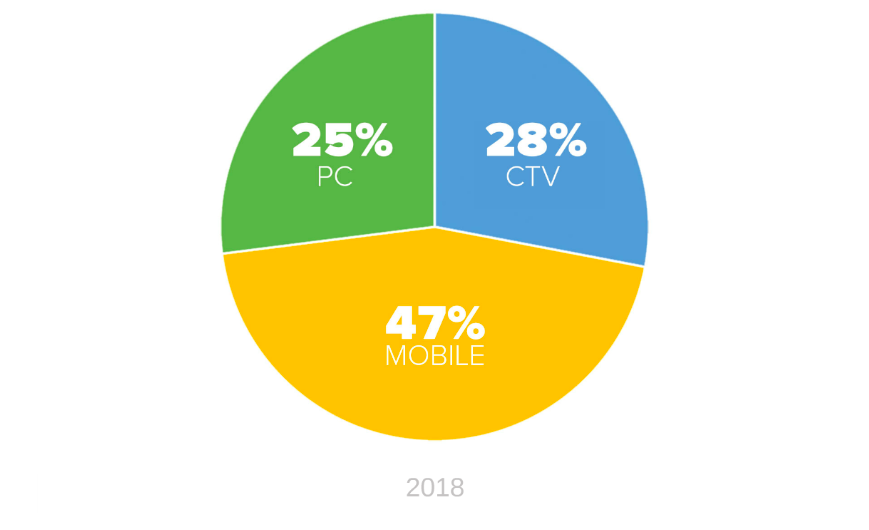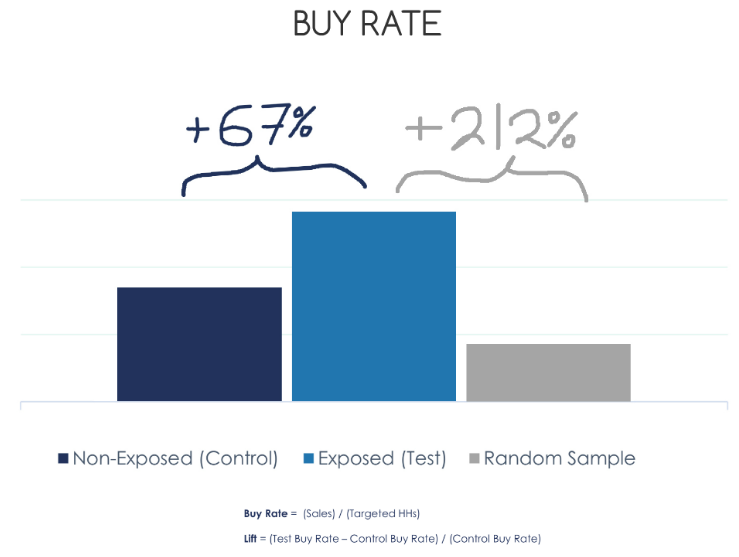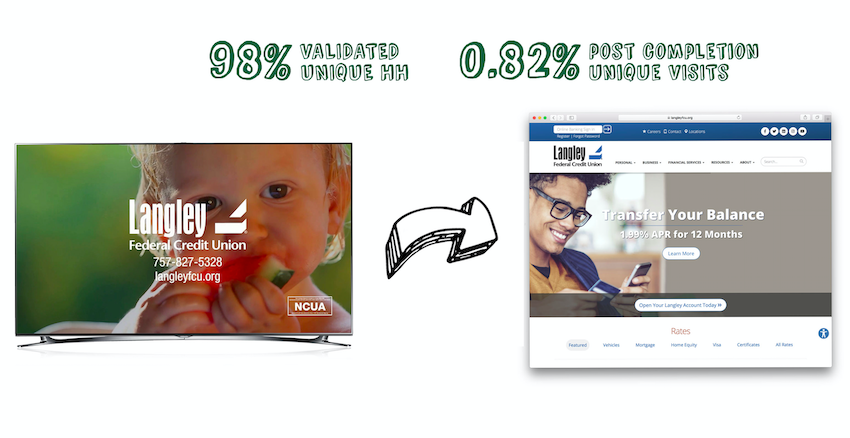Tune In: How Connected TV Drives Return on Ad Spend
As the IAB NewFronts wind down and television Upfronts begin to heat up, there’s one clear trend that bridges the two: the convergence of digital and linear television. As the leading independent video and connected TV advertising platform, Innovid has a front row seat to this convergence. From our unique vantage point at the intersection of these two increasingly interconnected worlds we’ve worked to develop insights and research, based on hundreds of millions of video and connected TV impressions that pass through the Innovid platform every year, that can help to guide our clients and the industry at large. At this year’s IAB NewFronts Insights Symposium, we shared some of our most significant findings.
Connected TV Has Arrived
The most salient trend we’ve observed this year is the rising prominence of connected TV as a substantial part of the media mix. Just over 28% of Innovid impressions were served on connected TV in 2018 up from 17 the previous year. We anticipate that this trajectory will continue into 2019 and beyond as adoption of connected devices continues to grow. Significantly, 2018 was also the year that connected TV impressions eclipsed desktop impressions for the first time, establishing CTV as a permanent part of the media mix.

This shift presents a world of opportunities for marketers. The transition to connected TV is particularly pronounced among broadcasters who saw 63% of their impressions served on connected devices in 2018 compared to 57% in 2017. Broadcasters and non-broadcaster content alike drove substantial results in terms of conversions and engagement, but critically, the application of connected TV allowed marketers to secure additional earned time on top of their initial ad buy using interactive units that expand and extend brand content. On broadcaster content, these units produced an average of 71 seconds of earned time and attention.

By combining the reach and impact of television with the interactivity, substantial audience data, and potential for personalization and direct messaging most associated with digital, connected TV creates new opportunities for marketers to drive sales lift, achieve true attribution, and turn even the biggest live events into interactive viewer experiences.
Location and Personalization Power Sales Lift
We live in a world that’s becoming more personalized by the minute. From Netflix queues to Spotify playlists consumers have come to expect personalized service and convenience from every experience and advertising shouldn’t be any different. Innovid partnered with Modi Media and Volvo to build a campaign that brought those factors together to drive results.
Connected TV viewers were exposed to Volvo’s compelling creative with an added twist of personalization. Every ad used location data to show the location of the nearest Volvo dealership along with the Volvo offer. A test targeting primarily affluent households showed a 67% lift over a non-exposed control group as measured by Experian and a 212% lift of a random sample outside the control group. Ultimately Volvo saw at 7.35 X ROAS (return on ad spend) over the course of the campaign.

Site Visit Attribution
Connected TV also opens the door to true direct response campaigns not previously possible with traditional linear television. While traditional television offered substantial reach, it lacked the cookies, click-through capabilities, and robust client data enjoyed by digital advertisers. Connected TV offers a solution to these challenges and provides an opportunity to not only drive responses but to enable meaningful television attribution.
In a recent campaign, a Virginia-based local advertiser Langley Federal Credit Union was able to drive a substantial increase in site visits with a campaign run across Sinclair Broadcasting’s Compulse OTT platform. The campaign reached an audience of 98% validated households and drove 0.82% post-completion unique visits to Langley’s website. These results prove that connected TV offers the TV to digital attribution metrics that linear TV has never been able to provide.

Interactivity at the Big Game
While television has traditionally offered a passive viewing experience, the rise of connected TV will allow marketers to drive engagement through unique interactive experiences. By injecting interactivity into the television viewing experience we’ve been able to improve performance even around some of the most sought after advertising real estate in all of media: the Super Bowl.
We partnered with CBS interactive and Kellogg’s to create a unique interactive experience for the Pringles brand during the big game. Two interactive creatives including a location-based and shoppable unit were deployed during the broadcast drove significant results. The shoppable unit creative generated 0.6% clicks to the Amazon storefront – to bring the point of purchase even closer to the viewer.A second creative used dynamic personalization to connect with viewers, altering city names within the ad based on geolocation data. These creatives were versioned further to highlight Pringles flavor combinations ultimately creating 4,224 unique creatives delivered concurrently with dynamic creative for the city name – the largest execution of its kind and delivered over 6.4% engagement, meaning that 6.4% of households used the remote to interact with the Pringles spot. That’s roughly four times the Innovid benchmark and a first for a live broadcast event.

What does it all mean?
If you take one thing away from this year’s NewFronts and Upfronts presentations it should be that not only are we living in a period of peak content across broadcast and digital video, we are also living in a time of unprecedented opportunity for marketers to achieve measurable results. For the first time real interactivity, meaningful direct response attribution, and measurable lift are all possible from the platform of connected TV.